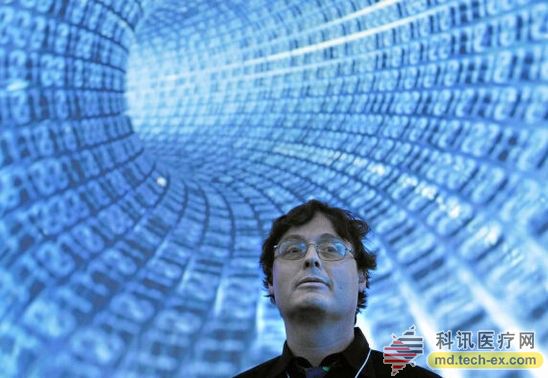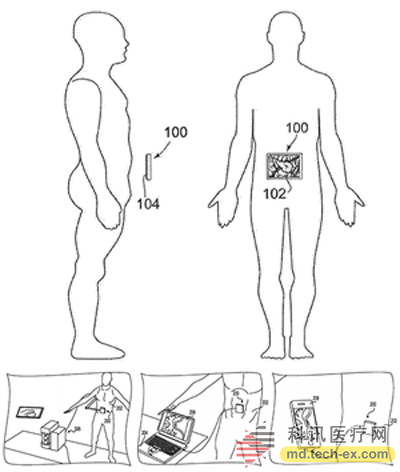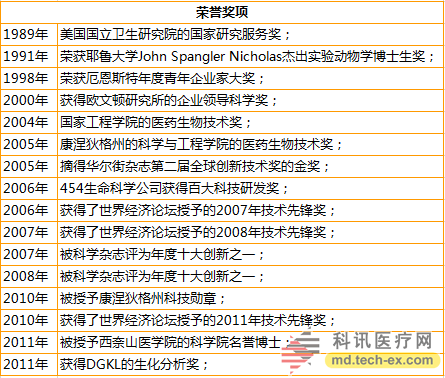Release date: 2014-11-12

Jonathan Rothberg is definitely a man of the biological world. He received a bachelor's degree in engineering from Carnegie Mellon University and a Ph.D. in molecular biochemistry from Yale University. He has founded five health and bioscience companies, making significant advances in DNA sequencing technology. contribution. In the past seven years, he has sold his own two genetic research companies, 454 Life Sciences and Ion Torrent Syst, for more than $500 million. It is a good entrepreneur and a veritable rich man. Some people predict that he will become a Nobel laureate for his research on gene sequencing, and Rosenberg likes people's name, "Steve Jobs in the field of biotechnology," although he is currently Innovation is not as well known as Apple's founders.
Jonathan Rothberg's road to gene decoding
The first time in life
In 1993, Rosenberg, who had just received his Ph.D. in biochemistry from Yale University, founded his first company, CuraGen, in his basement. This was one of the first companies to search for new genes using automated methods. Curagen 1999 Public listing. In the second year, the market value reached 5 billion US dollars. In 2001, Curagen signed the largest single business in the biotechnology industry at the time, and signed a $1.5 billion contract with Bayer to study drugs for the treatment of obesity and diabetes. However, Curagen soon encountered Waterloo. Its first drug development failure for chemotherapy side effects, and Bayer's cooperation is no longer, investors began to worry, and only retreat. So in 2004, Rosenberg was pushed out of the company. In 2009, drug discovery company Celldex Therapeutics acquired Curagen for only $95 million.
During this period, he founded 454 Life Sciences in 1999, which is owned by CuraGen. At the end of 2005, 454 introduced a revolutionary ultra-high-throughput genome sequencing system based on pyrosequencing, Genome. The Sequencer 20 System pioneered the sequencing-by-synthesis. In 2006, 454 introduced a second-generation genome sequencing system, Genome Sequencer FLX System (GS FLX). In early 2007, Roche Diagnostics signed an agreement with CuraGen to acquire 454 for $155 million in cash and stock. Roche has been the exclusive distributor of 454 since 2005, and they hope to consolidate this acquisition. The right to use the 454 sequencer in the future. In October 2008, the addition of the new GS FLX Titanium series of reagents, consumables and software increased the flux of GS FLX by a factor of five, and further improved accuracy and read length.
Passionate
After leaving Curagen, in 2004, Rosenberg and David Weitz founded RainDance Technologies, based in Billerica, Massachusetts, to make use of high-throughput micro-droplet technology (RainStorm â„¢ technology) for human health and life science research, providing emerging life sciences companies and research instruments and reagents, is intended to focus on research and development of better health care outcomes and reduce cancer and genetic disease research, testing and treatment the cost of. The company's innovative RainStorm â„¢ digital droplet technology allows next-generation sequencing and gene detection system even more powerful, has brought significantly better performance, cost, and ease of use explanatory; RainDance systems are widely used in major research institutions around the world , clinical genetics laboratory and hospital; RainDrop TM digital PCR system greatly exceeds other digital PCR systems, excellent in sensitivity, multiplex analysis and absolute quantification of PCR analysis; ThunderBolts Sequencing Panel for cancer gene capture kit launched in February 2014 Capable of capturing cancer-related cancer-mutant genes in samples, enabling researchers to quickly and economically perform cancer gene sequencing on FireWire specimens, supporting customers through international sales and service businesses, as well as distributors and commercial service providers worldwide. According to the arterial network, Rosenberg left RainDance Technologies in 2009 for unknown reasons.
Bring gene sequencing technology to every lab or clinic
In 2007, a dialogue with his son Noah led to the birth of PGM. When an 8-year-old asked about whether his father could invent a device that understood his thoughts, Rosenberger expressed the idea of ​​creating a miniature chemical sensor that could read "electronic signals transmitted between neurons." This idea led to the birth of the Torrent chip, a semiconductor that can analyze genes. This greatly simplifies the process and reduces the cost of the machine. In 2007, he set up his own savings to start Ion Torrent, and later received $23 million in venture funding. I learned the painful lessons of the 454 company, this time he has the majority of shares, so as not to be forced out again.
In February 2010, just three years later, Ion Torrent launched the world's first semiconductor sequencer, the personal chromosome detector PGM. The core of PGM is a silicon chip with 21 million transistors. It is understood that the computing power is equivalent to one. Taiwan's 95-year-old desktop computer. The gene decoder (decoder) has a length, width and height of only 60.96*50.8*53.34 cm. The decoder has an 8-inch touch screen on the outside. There is a port on the left that can download data to the iPhone. There are 4 buttons at the bottom of the screen labeled â—‹, X. , â–¡ and + symbol test tubes, which represent the most basic four chemical substances that form human DNA, guanine (the basic component of nucleic acid, guanine), cytosine, adenine and thymine ( Thymine).

PGM
PGM was the market at the time and the smallest in the world with the lowest detection cost. It can interpret 10 million genetic code symbols with high precision within 2 hours. Unlike the large-scale computer and server DNA scanning devices used in the past, PGM can be placed on a desk. One tenth, so it is also known as the "chair type" sequencer. At a price of only $50,000, unlike traditional sequencers, it doesn't require lasers, imagers, or markers, and the price is certainly much cheaper. This is also the first time in history that scientists, individual hospitals and colleges can afford the sequencer. Rosenberg said that in addition to PGM, which can be used to change medicine, agriculture, nanotechnology and other renewable fuels, in the future, doctors can repair the genetic defects of tumor parts through DNA sequencing, and according to cancer patients. Different cases are targeted, children with congenital rare diseases can also be targeted to decode more chromosomes to prevent misdiagnosis.
Before the official production of PGM, Life Technologies acquired Ion Torrent for $720 million in the fall of 2010. After the acquisition of Ion Torrent, Life Tech quickly launched the sequencer. Until 2011, with the launch of the new chip, the output increased. More than 100 times, and the read length reaches 400 base pairs. In early 2012, Life continued to introduce the more powerful Ion Proton sequencer. Unlike PMG's rapid and inexpensive detection of small genomes, gene collection, gene expression, and ChIP-SEQ, Ion Proton is concerned. The human genome, the human exome, and the whole transcriptome are sequenced, and the Ion Proton sequencer can complete a complete genome sequencing of a person in just one day at a cost of just $1,000. In September 2012, the new instrument Ion Proton was launched for higher production.

Ion Proton
Explore new opportunities: health incubator
Until June 2013, when Thermo Fisher Scientific and Life Tech acquired $13.6 billion, Rosenberg chose to resign and attracted one of the important reasons for the acquisition of Thermo Fisher. It's Ion Torrent, although it only accounts for a small percentage of Life Tech's overall revenue. Rosenberg was the founder of Ion Torrent and a key figure in driving the business. After resigning, investors were curious about Rosenberg's position in the company after the merger, but he chose to leave. In July 2013, LAM Therapeutics was founded to develop drugs for the treatment of pulmonary lymphangiomyomatosis (LAM) lymphangioleiomyomatosis. The team consists of experts in biochemistry, chemistry, genetics, and molecular biology. . This is not a "new opportunity to pursue." Until recently, the media broke out with a health startup incubator, 4Combinator, the company's Butterfly Network, which raised $80 million in early November, and the incubator was being established in July 2014 by Rosenberg in Connecticut. The search for life has never stopped.
Keeping the same way, cherish healthy life
The Butterfly Network was founded in 2011 by Rosenberg and a group of physicists and engineers from the MIT Lincoln Laboratory. Rothberg served as CEO of the company, which is building a collection of thousands. A database of images is then used to obtain new clinical treatments using artificial intelligence techniques. New medical imaging devices have been developed that look at the human body in new ways. Butterfly's product philosophy is to replace the expensive medical imaging equipment, allowing users to get a complete medical image in just 8 seconds.

Expectations for the future, Rosenberg said, I hope that Butterfly can have the ability of deep learning, simulate neural network processing a large amount of human body data, can achieve the function of speech recognition, and achieve the purpose of artificial intelligence. Let everyone know that choosing Butterfly is to choose to cherish healthy life.
The story of love in the genetic age
Behind the brilliant success of Rosenberg's gene decoding, there is a serious and powerful task. His 17-year-old daughter has mild tuberous sclerosis (TSC), also known as Bourneville disease. This is a rare genetic disorder that can lead to benign tumors of the heart, kidneys, skin, lungs, bones, eyes and brain (only about 50,000 patients in the United States). His second son, Noah, had difficulty breathing after he was born in 1999. Although it proved to be no problem, he still hopes to find a way to quickly scan genes, which may lead to the root of the disease and promote pharmaceutical companies. Drug development for the disease, "all the power is ultimately personal," Rosenberg said. "Because we all want to influence the people we love, if purely for academics, I might start an artificial intelligence company."
Jonathan Rothberg has always been honorary:

Source: Arterial Network
Soft Comfortable Dressing,Breathable Dressing,Silicone Dressing,Custom Hydrocolloid Dressing
Zhende Medical Co.,Ltd , https://www.zdmedicalproducts.com